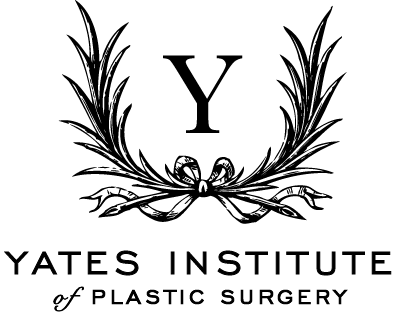Risks associated with eyelid surgery and how to prevent them
Over time, the skin on the eyelids begins to lose elasticity. The supporting muscle of the eyelid weakens, resulting in a tired look of the eyes, drooping eyelids, bags under the eyes, and unsightly circles.
If you face all these shortcomings that make you look older, you can benefit from blepharoplasty, a quick and effective method to correct the appearance of drooping eyelids.
What is blepharoplasty?
Blepharoplasty is one of the most requested interventions in the field of facial surgery. Blepharoplasty or eyelid lifting is a surgical procedure that removes excess skin and fatty tissue from the upper or lower eyelid or even both, thus improving the face's overall appearance. By blepharoplasty, the dark circles and bags under the eyes can be treated to create a younger, brighter look of the whole face.
Being an intervention not only aesthetic but also functional, the patient will get rid of tired eyes and heavy eyelids. Reading or working on the computer will no longer seem demanding activities.
Blepharoplasty is generally recommended at older ages, although depending on the needs of each patient, it can be done even earlier. In general, women most often request this intervention, but it is also addressed to men, being considered a procedure with rejuvenating effect, facial rejuvenation.
Here are some of the risks that are usually associated with blepharoplasty, as well as the methods used to prevent them:
Infection after blepharoplasty
After you have been discharged from the hospital, after surgery, you need to know when the signs of an average postoperative recovery become abnormal and when there are reasons for concern. If you have one or more of the following symptoms, you should contact your surgeon or family doctor for proper treatment.
Common symptoms of infection are externalization of pus from the incision, the opening of the wound edges, temperature rise above 38.4 degrees Celsius, persistent pain. To prevent infection, the following can be done:
The dressing should be changed whenever needed, and a wound should not be left untouched for 3-4 days. After three days, the surgical wound can be left free if the evolution is good. Change the dressing early when: it is wet, thus favoring bacterial contamination of the wound. If the plastic surgeon advises on a course of antibiotics, you should follow it as it was prescribed.
Also, if the plastic surgeon advised changing your dressing in his office daily or once every two days, you should respect these recommendations. Do not miss an appointment, as regular checkups are crucial for your overall well-being.
Also, you should practice proper nutrition, rich in vitamins and iron, with adequate hydration.
Conjunctivitis after eyelid surgery
The conjunctiva is a thin, transparent membrane that covers the anterior part of the eyeball. Wallpaper the back of the eyelids.
The symptoms are foreign body sensation or stinging, burning, eye embarrassment. Visual acuity is not altered when only the conjunctiva is interested in the inflammatory process. Decreased vision is a sign of corneal damage in the inflammatory process.
Symptoms of conjunctivitis are hyperemia (redness), conjunctival hypersecretion, cilia agglutination, tearing, papillary hypertrophy, follicles, membranes, or pseudomembranes, chemosis (edema), blisters.
The treatment consists in allergen removal, astringent eye drops, 1% topical corticosteroid solutions, antihistamines, calcium preparations, vitamin B and C therapy in general.
The transmission of the disease can occur within the background of inadequate sanitation, a collective environment (for example, at school or work), when a healthy person uses the same towels or cosmetics with the patient, or by exposure to other pollutants (pollution from air, chlorinated pool water or car pollutants). Avoiding the above will prevent the risk of developing postoperative conjunctivitis.
Unsightly scars after eyelid surgery
The healing process will trigger a series of 3 steps to repair the wound:
Stage 1: inflammatory (for 2 to 4 days)
This stage begins with the formation of a blood clot that stops the bleeding. Then the body mobilizes and fights to remove foreign particles. Due to the rich local vascularity that promotes the formation of new tissue, the scar is red.
Stage 2: repair or proliferation (from day 10 to day 15)
The body begins to fill the loss of substance with new tissue through the synthesis of collagen fibers. This forms the epithelium, the most superficial layer of the skin; at the same time, the wound will contract to allow the edges to approach until the total closure.
Stage 3: maturation or remodeling (from 2 months to 2 years)
During this stage, the collagen and elastine fibers will be denser and will grow to structure the skin, and the vascular network will organize to return to "normal."
To prevent the appearance of scars, it is essential to follow some important steps:
wound cleaning (reduces the risk of bacterial superinfection) with antiseptic pharmaceuticals (neutral soap) and disinfectants (sanitary alcohol, iodine solution, hydrogen peroxide solution has in addition hemostatic effect, favoring stopping bleeding),
use of appropriate emollients and creams,
encouraging healthy nutrition (rich in vitamin K with a coagulant role: asparagus, cabbage, green tea, eggs, or soy
avoiding the damage of the newly formed tissue.
The crusts will not be removed. They must be left to stand on their own. Early removal of crusts will cause atrophic scars.
The movement of the injured region must be minimized. Tension and movement will widen the keloid scar.
Sun exposure is prohibited throughout the evolution of the scars until they become entirely white.
Hematoma after blepharoplasty
There may be bleeding episodes during surgery or postoperatively. In most cases, these are an exception. If postoperative bleeding occurs, emergency treatment may be needed to drain the accumulated blood. It is essential to follow the postoperative instructions exactly and not perform physical activities for the specified period. It is forbidden to take aspirin or nonsteroidal anti-inflammatory drugs for ten days before and after surgery as they may increase the risk of bleeding.
A hematoma can appear in the first two weeks after surgery, usually after the physical trauma of the operated site. Bruising (bruising) is expected after surgery, which should disappear within two weeks of surgery.
Final words
As with any surgery, eyelid surgery involves certain risks related to the postoperative behavior of each patient. These can be prevented by following the surgeon's instructions strictly. These may include:
practicing daily hygiene rigorously
compliance with the medical prescription for antibiotics
avoid physical exertion and certain medication that can cause bleeding.


